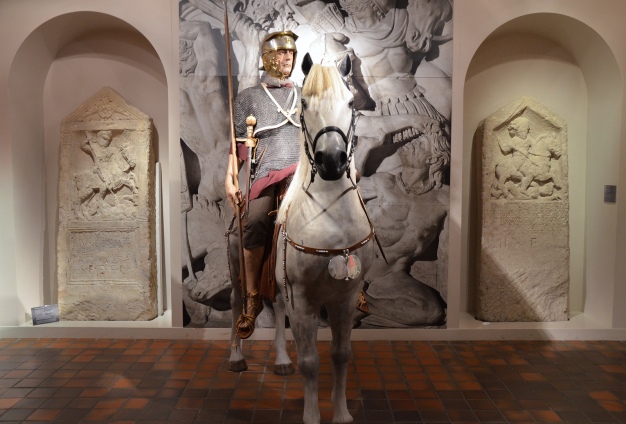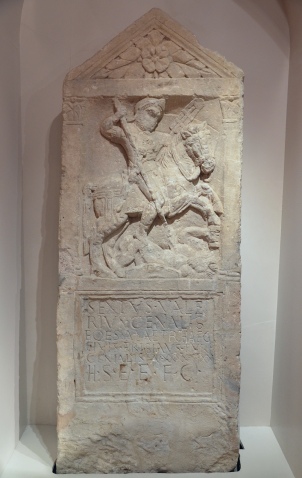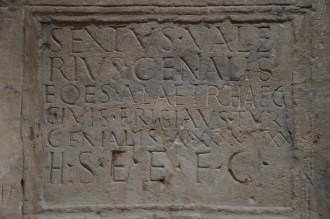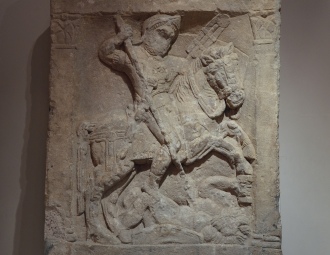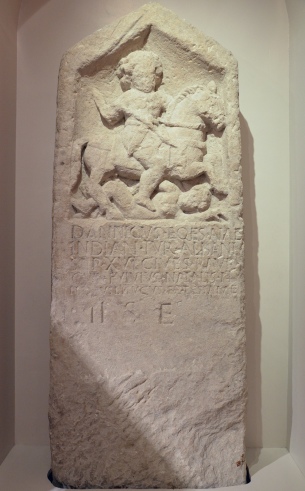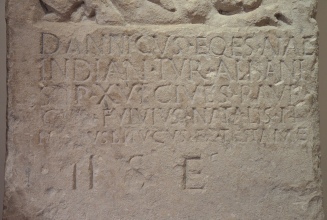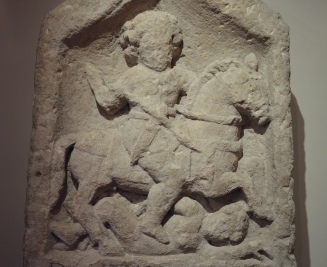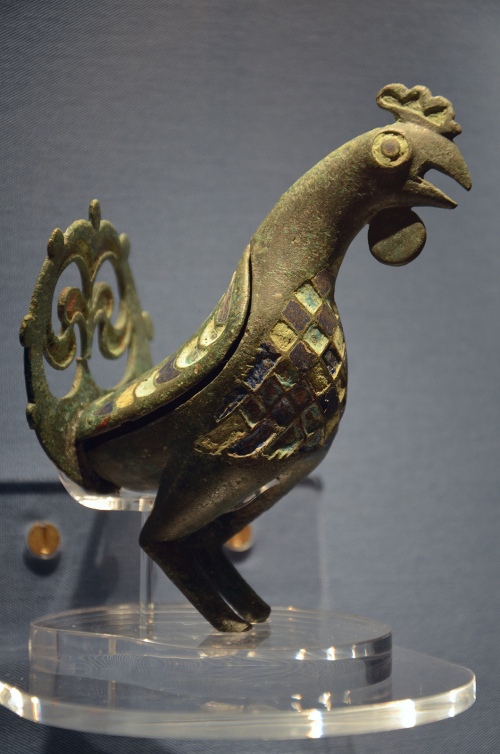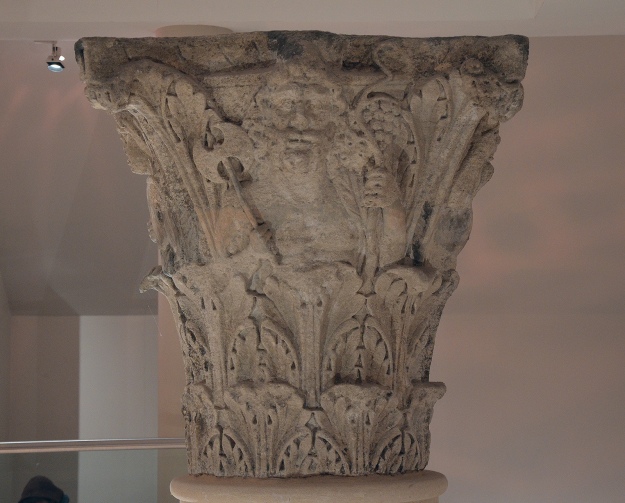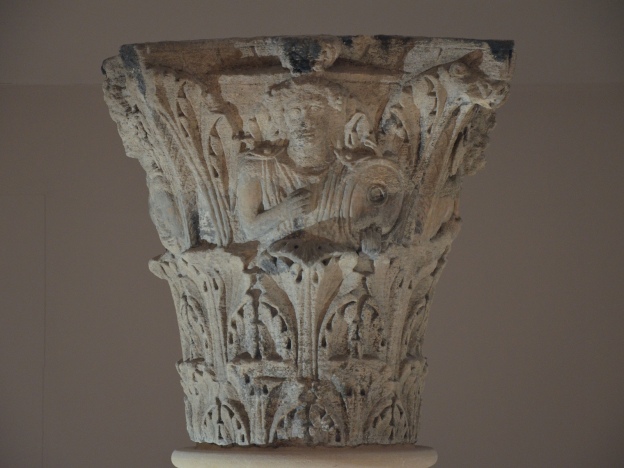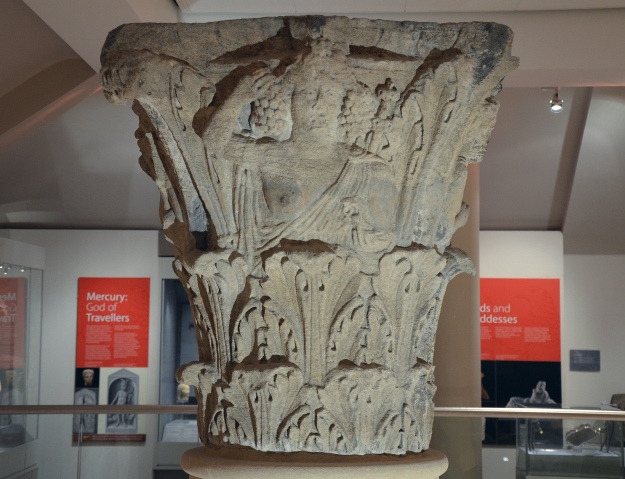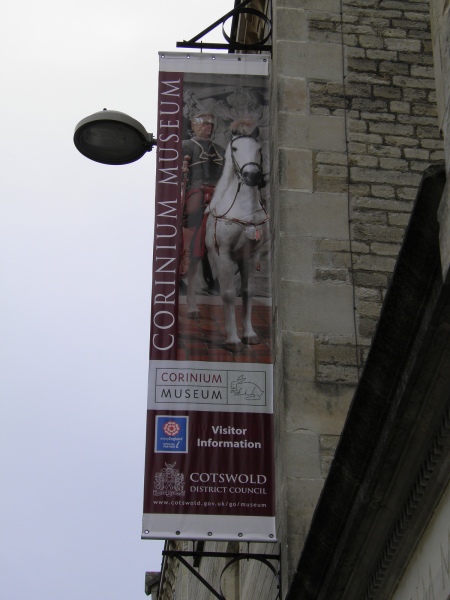Each year Twitter has an event for international Museum Week (#MuseumWeek), which celebrates the many museums, galleries and cultural institutions that make valuable contributions to the arts, history and culture around the world. More than 2,200 museums, galleries and cultural institutions from over 64 countries come together on Twitter for #MuseumWeek including the Corinium Museum in Cirencester in the UK (@CoriniumMuseum).
I re-visited the recently refurbished and extended Corinium Museum earlier this year, and today I invite you to discover 7 ancient Roman treasures from Cirencester (named Corinium Dobunnorum in Roman times), once one of the most important places in Roman Britain, second only to London.
1. The tombstones of cavalrymen Genialis & Dannicus
The short epitaph on the tombstones gives us valuable information about these two soldiers. Sextus Valerius Genialis was a Frisian (from Holland) in a unit of Thracians (modern Bulgaria) whilst Dannicus of the ala Indiana came from Augusta Raurica (Augst, Switzerland).
Both cavalrymen are depicted on horseback, spear in hand, with a fallen enemy at the horse’s feet.
2. The Hare Mosaic
The Hare has become the symbol of the city of Cirencester and the museum’s logo since the discovery of this ancient Roman mosaic depicting the animal on its central roundel. The mosaic, dating to the 4th century AD, was discovered just below the road surface during archaeological excavations in Beeches Road in 1971. The hare is seen crouching amid foliag ein the act of nibbling shrub. Today, the mosaic graces the entrance foyer of the Corinium Museum.
3. The Bronze Cockerel
This exquisite enamelled bronze cockerel was discovered during excavations in 2011 at the site of Cirencester’s western cemetery. It is believed to date from the 2nd century AD and came from the grave of a child aged 2–3 years. Only eight finds of this type are known from the Roman world but the Cirencester cockerel is the only example to have survived with its openwork tail and the only one from Britain from a grave.
4. The Orpheus Mosaic
This 4th century AD mosaic was found just outside Cirencester in 1824. It depicts Orpheus, a mythical poet and musician, encircled by animals charmed by his music.
Orpheus was a popular subject in classical art and this mosaic is one of nine Roman floors found in Britain that show Orpheus playing inside a circle of animals (including the Orpheus Mosaic from Newton St Loe, the Orpheus mosaic from Woodchester and the Orpheus mosaic from Littlecote Roman Villa). The Cirencester mosaic is thought to be the oldest of all.
5. The Jupiter Column’s Corinthian Capital
Dating to the 2nd century AD, this Corinthian capital was found in 1838 near the centre of Cirencester. It has been raised on a reconstructed column to give the impression of what it would have looked like.
It is thought that this capital was once part of a Jupiter Column topped with a statue of Jupiter. The four sides of this capital are carved with the faces of four Gods: Bacchus with bunches of grapes on either side; Silenus lifting a ram-headed drinking horn from his lips; Lycurgus holding a vine staff and a double-headed axe; and Ambrosia playing a drum.
6. The Hunting Dog Mosaic
This mosaic was found in Cirencester in 1849, inspiring the creation of the first museum. In the central medallion, three dogs converge to their prey. We do not know what animal they were hunting, as this part of the mosaic was incomplete when found and has been patched with plain tesserae.
The semicircles on either side each contain a mythical marine creature; a sea-leopard and a winged sea-griffin chasing a dolphin.
A particularly fine and detailed representation of the winged head of Medusa can be seen in one of the corner compartments as well as a representation of the the sea-god Oceanus. It is unusual to find both representations in the same mosaic.
7. The Kingscote Wall Plaster
This wall fresco painting comes from site at Kingscote which was occupied from the late 1st century AD through to its heyday in the 4th century. It may have been a small town or villa estate, with evidence of a series of strip buildings replaced in the 4th century by a house within a walled compound. The house seems to have been of high status, with mosaic floors, including a Venus mosaic and wall-plaster paintings.
The fresco has been reconstructed from thousand of fragments. It is believed to represent a continuous scene depicting Cupid and Venus with the armour of the God Mars. The other figures in the scene are thought to represent other gods and goddesses. It probably dates to the end of the 3rd or early 4th century.
FURTHER INFORMATION
Opening hours: Monday – Saturday, 10am – 4pm / Sunday, 2 – 4pm
Admission rates: Adults £4.95 – Children (5 to 16) £2.45, Under 5’s free – Students (16+) £3.30
Address: Park Street, Cirencester
Originally published on Following Hadrian, republished with permission.
